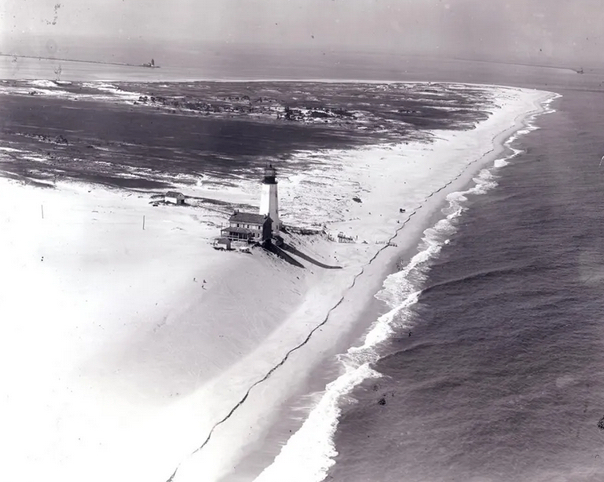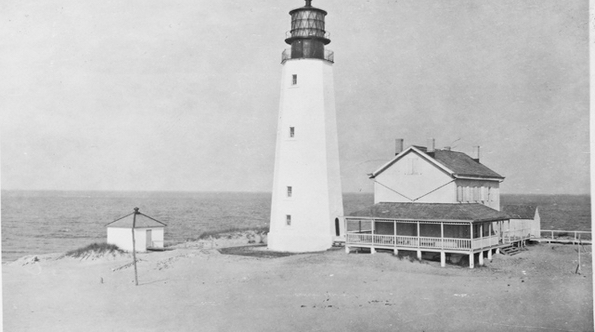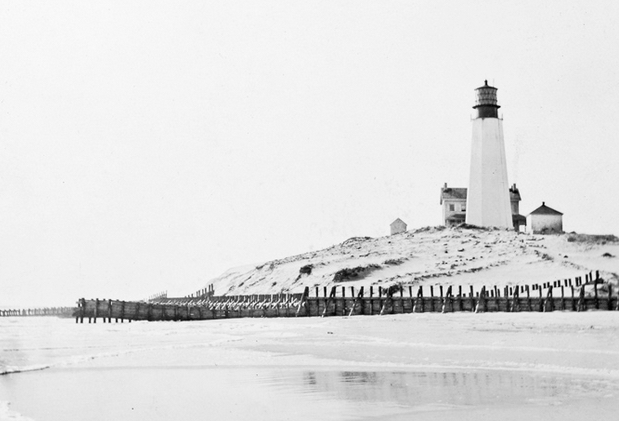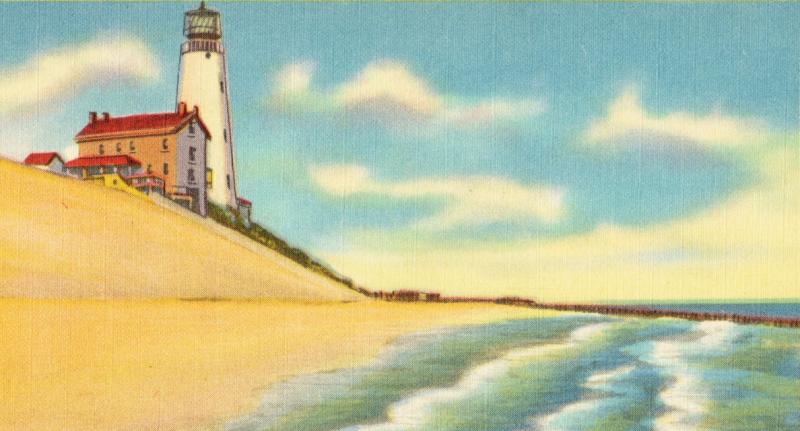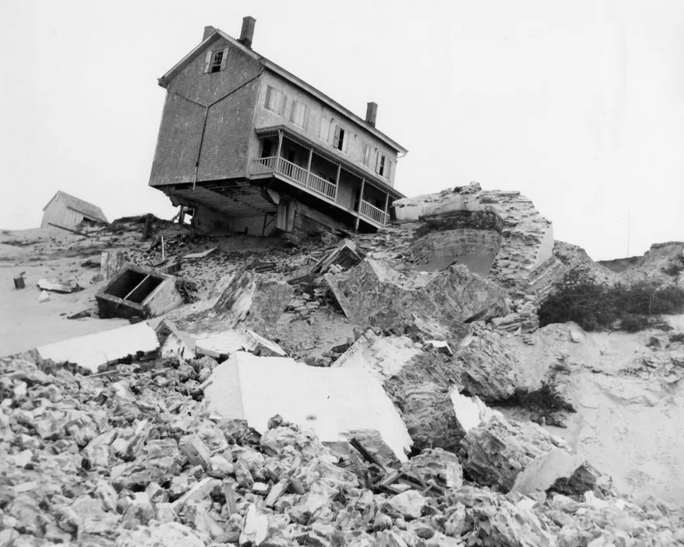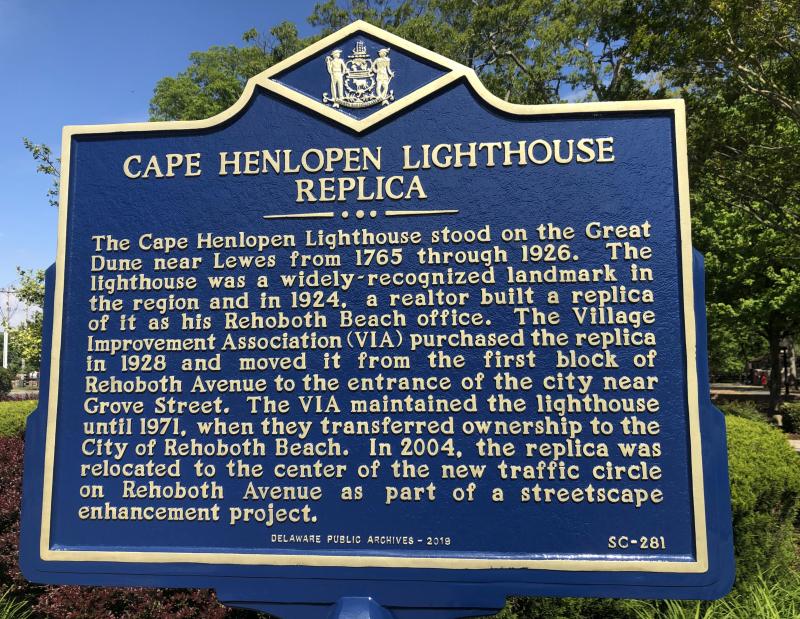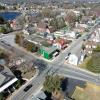When Cape Lighthouse fell, stones were in high demand
Do you have any Cape Henlopen Lighthouse stones?
If everyone who says they have some old granite stones from the fallen lighthouse actually had them, the lighthouse would have been one of the largest structures ever built.
When the iconic lighthouse succumbed to the Great Dune April 13, 1926, people rushed to the shoreline to see the destruction. Many also carted off stones. They were used in Lewes home construction – especially for fireplaces – and also taken as souvenirs.
A story in “Secrets of the Eastern Shore” contains the following snippets:
The Wilmington News Journal, April 14, 1926: “The souvenir hunters started removing pieces of the rock of the lighthouse and glass from the windows. One man is reported to have half filled his automobile with rocks from the tower.”
The Wilmington Morning News, April 15, 1926: “Souvenir hunters at the site of the fallen tower are ‘carting off everything in sight,’ according to a report from Lewes yesterday. Some talk has even been heard of retailing bits of wreckage.”
Government officials wanted to gather some stones to preserve history, but by the time they mustered efforts, the stones were either gone or broken into dust.
But there is a lot more to the story, at least according to John Custer of Lewes, who has done research on the subject.
Custer has found records that show the same quarry that provided stone for the lighthouse also shipped loads of stone to Lewes to sell to people who missed out on actual lighthouse stones.
And in one of the most incredible stories involving the stones, he said a small army of pickup trucks made the trek to Lewes from Seaford to get some authentic stones that were used to build the American Legion Post 6 fireplace.
Recently, the historic stones were in the news when Reed Ventures purchased the Sandy Brae homestead along Route 1 in Midway where the stones were used in two fireplaces and an exterior wall. The company saved the stones and donated them to the Delaware Division of Parks and Recreation.
When people drive up to get their coffee at the new Starbucks planned for the property, they will never know they are on a historic site.
A really big story
The fall of the lighthouse is one of the biggest stories to ever take place in Lewes. It was the second lighthouse built in the United States, going into service in 1769.
It later became apparent that the Great Dune and its ever-shifting sand were impacting the lighthouse and undermining its foundation. Erosion was taking place at a rapid rate. In 1905, several tons of beach vegetation were placed around the lighthouse and oil house in an effort to hold onto the drifting sand.
Beginning in 1914, protective works were built by the Lighthouse Service, but because of erosion along the coastline, it was an exercise in futility.
Before the collapse, the tower had been discontinued as a lighthouse. The light was changed Oct. 1, 1924, to an automatic light about 700 feet farther inshore.
Earlier in 1924, the lens was removed from the light for refurbishing and to be placed on display.
The lighthouse was built in 1767 with money raised from lotteries in Philadelphia. Since there are no stones in Sussex County, the lighthouse was made of stone from a quarry on the Brandywine River north of Wilmington near the Pennsylvania border.
The lighthouse was 69 feet tall, 26 feet in diameter and built on the north side of the Great Dune nearly 50 feet above sea level at the highest spot in the area.
Efforts to save structure
It was estimated the sand was receding 35 to 40 feet per year and winds had blown away a half-mile of sand during a 40-year span.
By the early 1900s, it became obvious that Mother Nature was taking over.
Believe it or not, according to “Secrets of the Eastern Shore,” an effort was made to save the lighthouse prior to 1926.
Among the ideas was a giant wall of obsolete World War I ships to serve as a jetty, and another idea was to erect a large protective steel wall along the east side of the lighthouse. There was discussion to move the lighthouse to the Dover Green or University of Delaware campus. Rotary clubs across the state even tried to raise money to save the lighthouse.
The governor appointed the Henlopen Lighthouse Preservation Commission, and it became property of the commission in December 1924. Commission members determined the lighthouse was beyond saving at any cost.
Ominous warning
Two years before it fell, in July 1924, lighthouse keeper Capt. Gray spoke about the inevitable. He is quoted as saying, “Government engineers are puzzled in their efforts to save the old lighthouse. We have built jetties only to see them smashed, for the sea is stronger than man’s ingenuity. We have given up hope, and all we can do now is to wait until she sinks into the water.”
The lighthouse did survive some terrible storms into the 1900s. “Ironically, the end came not with a wicked storm but on a lovely spring afternoon, sunny and 62 degrees,” according to “Secrets of the Eastern Shore.”
According to the book “Lantern on Lewes: Where Past Is Present,” some government officials had gathered that fateful day in April to inspect the lighthouse and determine what was needed to preserve it. They were too late.
The officials were having lunch aboard a ship just off the coast when a lookout shouted, “It's gone.”
In another book, “The Cape Henlopen Lighthouse,” author John Beach tells the story of Western Union telegraph operator Roland Webster who was standing on a nearby bridge eating his lunch.
“The high spring tide was being pushed along by a strong northeast breeze, and wave after wave crashed on the beach, then slithered in to nibble at the sand hill supporting the lighthouse tower. Finally, at 12:45 p.m., that last bit of sand that meant the difference between support and non-support slipped down the hill toward the sea … and after a tottering moment was followed by tons of brick and stone. …
“A fine mist kicked up as the rubble hit the wave below. Webster blinked and saw it was gone.”
He went into downtown Lewes and broke the news to everyone at Morris’ Drug Store.
And some more
Another light also once stood on Cape Henlopen. In 1824, the Cape Henlopen Beacon was constructed on a 45-foot tower about a mile north of the Cape Henlopen Lighthouse. There is no record of what happened to the beacon.
Also, there are a lot of published stories regarding a British invasion of sorts of the lighthouse and even stories about burning out the interior. That’s a topic for another day.

